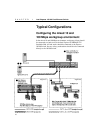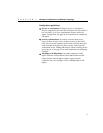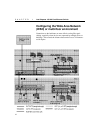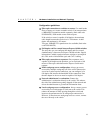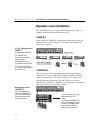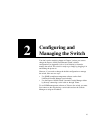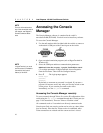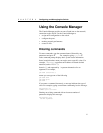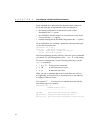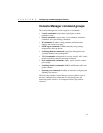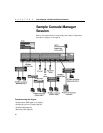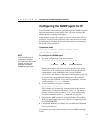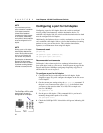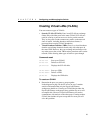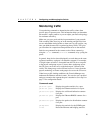
18
CHAPTER 2
Intel Express 10/100 Fast Ethernet Switch
Some commands have parameters that determine how settings are
saved and when they’re implemented. Some are changed in
• the running configuration so that the new value is used
immediately (the
run option).
• the NVRAM so that the changes are saved and occur only in the
next session (the
nvram option).
• both the running and the NVRAM configuration (the
all option).
For an explanation of a command’s parameters, add a question mark
(?) after the command name:
SYS_console> set-lt-age ?
set-lt-age sets the LT aging period
[arg #0] database type - either {run|nvram|all}
[arg #1] aging time in seconds
The Console Manager provides a history of the last several commands
you entered. To cycle through them, press ! or cP at the prompt.
To correct a command line, use the following special keys (see the
help-kbd command):
• ! or cP for the previous command
• cW to delete the previous word
• cU to delete the entire line
When you type a command that results in more than one screen of
text appearing, you can press Q to stop the process or any other key
to continue to the next screen.
You can press T to see the list of commands that start with the
text already typed. For example:
SYS_console> get-c
T
Commands matching <get-c>
---------------------------------------------------
get-comm show current read or/and write community
get-con-matrix displays the VLAN connectivity matrix
get-colls-cnt gets the collision distribution counters per port



